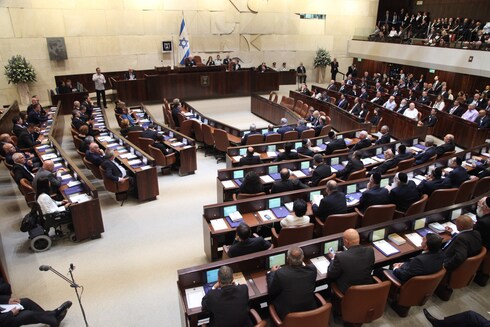
6 View the gallery
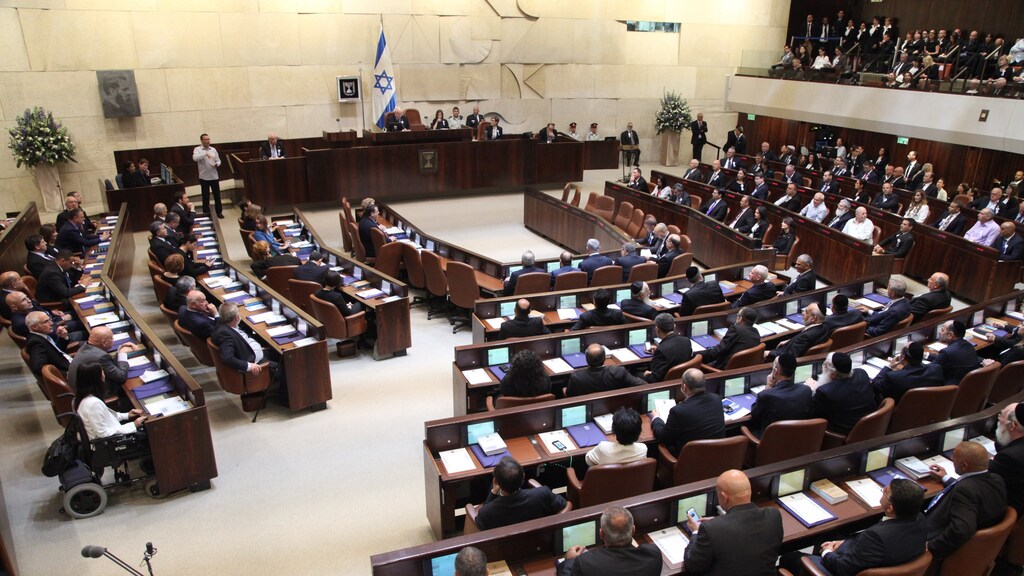

Will the 24th Knesset succeed in surviving the political spin?
(Photo: Knesset Spokeswoman)
The political system in Israel is at a dead end even after the fourth election within two years, and the 24th Knesset may find itself dispersing within a few months. Whether or not a solution to the political spin is found, with the publication of the election results the face of the new composition of the Legislature can now be outlined.
Which parties introduced four new MKs and which parties did not refresh at all? How many were expelled and who returned to the Knesset after the break? Where is there more female representation? Who is the old MK and where do our elected representatives come from? Ynet makes order in the new political map.
On the way to indecision? Expert panel at the Ynet studio
(Photo: Meshi Ben Ami)
In the new Knesset we see 17 completely new faces. Some parties will not introduce new MKs at all, such as Yisrael Beiteinu, Torah Judaism, New Hope and the joint list. Others are few, like the Likud, Shas and Meretz. But four parties will each present four new MKs. It is about a bad future, labor, the right and religious Zionism.
Along with the new MKs will also be several people who are considered Knesset veterans: Benny Begin, Moshe Gafni, Tzachi Hanegbi and Benjamin Netanyahu – who are all “members of the same circle” who were first elected in 1988 and have since strengthened a long parliamentary career.
Five former MKs – Orit Struck from Religious Zionism, Meirav Ben-Ari Mish Atid, Benny Begin New Hope and Issawi Frij and Musi Raz from Meretz – will make a comeback and return to serve as MKs after the truce.
6 View the gallery
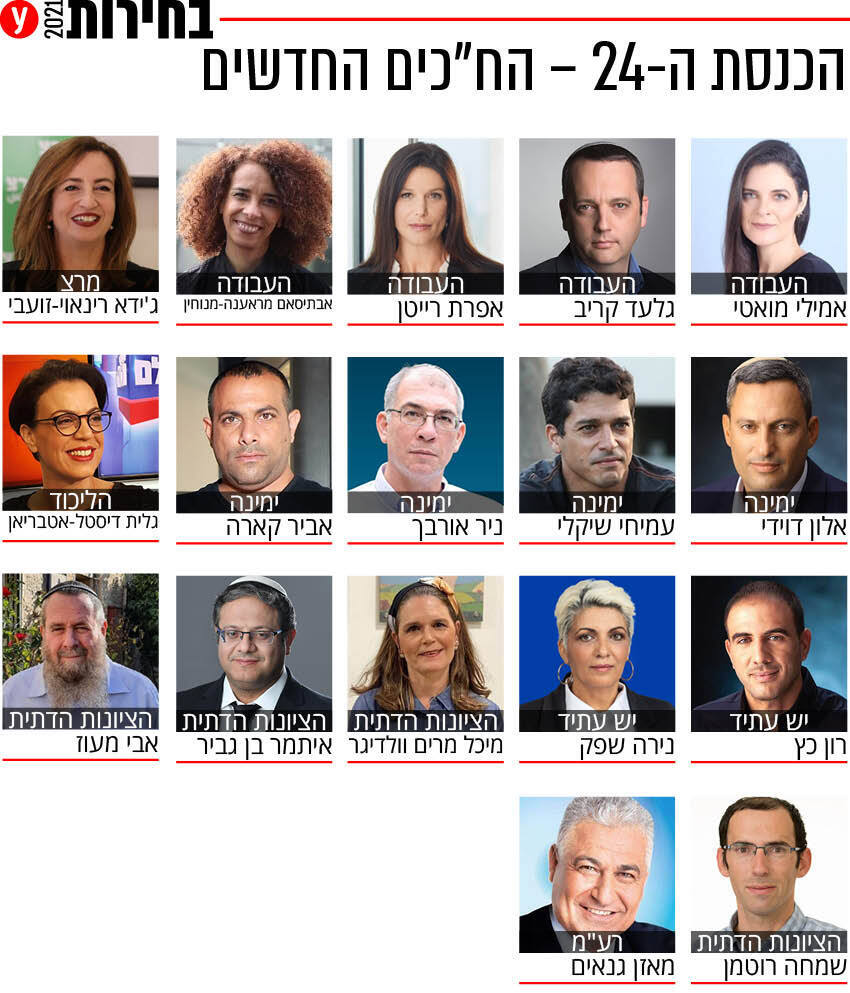

19 MKs who ran in the election will leave the Mishkan. Six of them from the Likud: MKs Tali Ploskov, Uzi Dayan, Ariel Kellner, Osnat Mark, Amit Halevi and Nissim Vatori (who was sworn in only in December, following the resignation of Gideon Saar). The word “former” is from Shas: Uriel Bosso and Yossi Tayeb who entered the Knesset following Norwegian law.
MK Ruth Wasserman-Landa White Brush will also not return to the Knesset, after a brief tenure that began on January 8, following a series of resignations by MKs White Brush when it disbanded ahead of the election. He returned to serve in the Knesset because of Norwegian law, but Wasserman-Landa returned to the Knesset again on January 31, after Ram Shefa resigned.
6 View the gallery
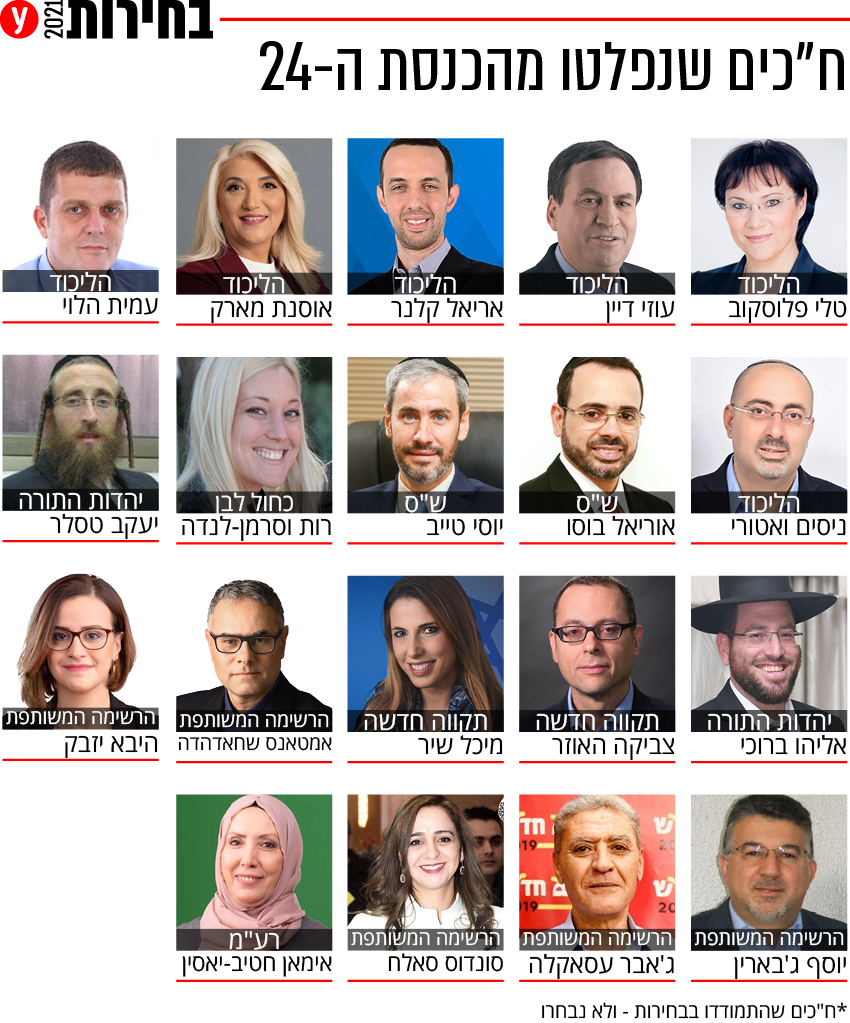

In Torah Judaism, two MKs will remain outside: Yaakov Tessler and Eliyahu Baruchi. Also MK Iman Khatib-Yassin from Ra’am outside. Yizbek, Yosef Jabarin, Jaber Asakla and Sundos Saleh. New Hope Two MKs will not return to the Mishkan: Zvika Hauser and Michal Shir.
30 women will serve in the 24th Knesset, ie a quarter of the members of the Mishkan. This is the same number as in the outgoing Knesset. Nine women will serve on behalf of the Likud, five Bish Atid, four women at work, three in blue and white, two in Meretz, two in religious Zionism and one woman on the right, the joint list and Yisrael Beiteinu.
6 View the gallery
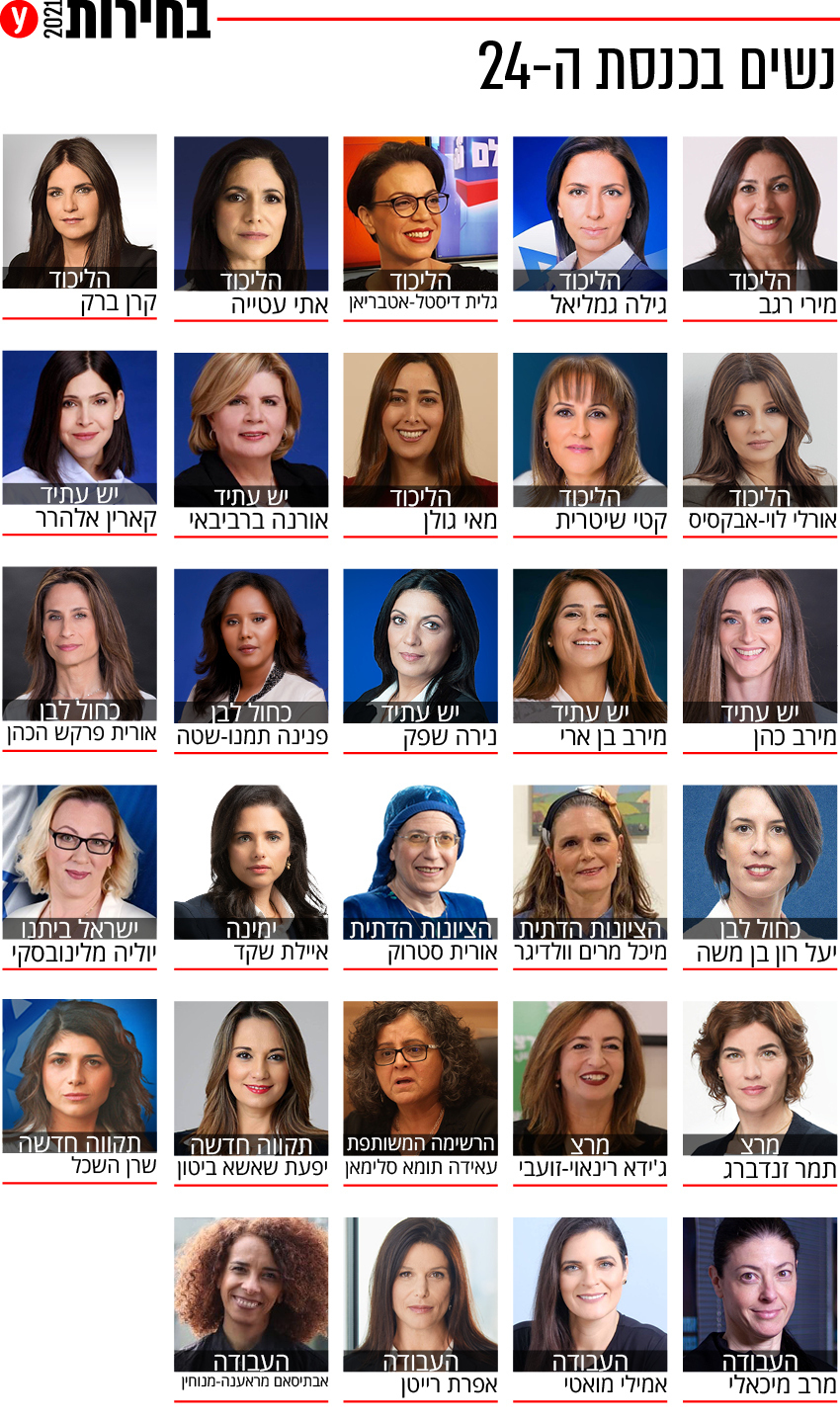

The new Knesset will have two Knesset members under the age of 35. The youngest of them is 32-year-old MK Yurai Lahav Herzno (Yesh Atid), followed by 34-year-old MK Mai Golan (Likud). Only four MKs are over 70. The “elder of the tribe” is Benny Begin (78), followed by Haim Katz (73), Yaakov Litzman (72) and Prime Minister Benjamin Netanyahu (71).
Five LGBT members will serve in the upcoming Knesset: Minister Amir Ohana of the Likud, Meretz Chairman Nitzan Horowitz, Eitan Ginzburg of White Brush and Idan Roll and Yurai Lahav ran Mish Atid All five are gay men, and representatives of other groups in the LGBT community, such as lesbians or transgender people, will not serve in the Knesset.
6 View the gallery
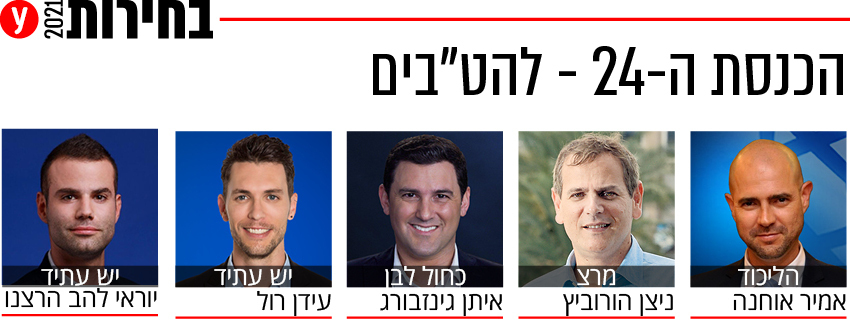

Previous political experience in local government continues to be the most common “leap” for a parliamentary career. Almost a quarter of the elected members of the next Knesset began their careers at the local level. This emerges from a survey conducted at the Israel Democracy Institute. Among the names we can mention Nir Barkat (Jerusalem), Meir Cohen (Dimona), Alon Davidi (Sderot), Mazen Ghanaim (Sakhnin) and Michael Bitton (Yeruham).
Another prominent background is security, but in the current Knesset we see fewer former generals, after two chiefs of staff (Gabi Ashkenazi and Moshe Ya’alon) did not run this time and former general Uzi Dayan was not elected (he is placed 32nd on the Likud list). The 24th is former chief of staff Bnei Gantz and four other generals in reserve: Yair Golan (Meretz), Yoav Galant (Likud), Orna Barbibai (Yesh Atid) and Elazar Stern (Yesh Atid). She will also continue to serve as Brigadier General in the reserve Miri Regev, who was the IDF Spokeswoman.
6 View the gallery
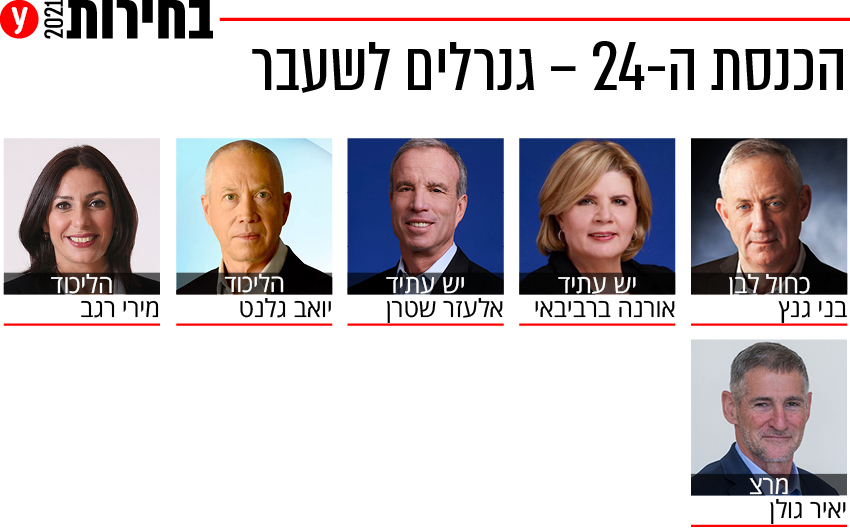

The next Knesset will feature seven former journalists. Yesh Atid chairman Yair Lapid, Labor chairman Meirav Michaeli and her party member Emily Moati, Meretz chairman Nitzan Horowitz, Galit Distal-Atbrian of the Likud, Yoaz Handel of New Hope and Yevgeny Soba of Yisrael Beiteinu.
Eighteen of the next Knesset members live in Tel Aviv, compared to 15 Jerusalemites and three others from nearby Mevaseret Zion. Only between 9 and 10 of the MKs are residents of the south – from the Kiryat Gat line to Ashkelon and to the south.
An examination by the Israel Democracy Institute shows that the 24th Knesset also sees more settlers: it will include seven people living beyond the Green Line, four of whom are from the list of religious Zionists. The kibbutzim – after years of almost zero representation – will also see the current Knesset as a good representation with four MKs, including two from a white brush (Alon Shuster and Yael Ron Ben Moshe), one from the Labor Party (Ram Shefa) and one from Mish Atid (Nira Shefek).
Four MKs in the current Knesset are Muslim religious from the RAAM party, 12 members of the Knesset belong to Arab society, 14 of the MKs are national-religious and 16 of the MKs are ultra-Orthodox. Two are from the Ethiopian community – Pnina Temanu Sheta with a white brush and Gadi Yabarkan from the Likud. The Druze community also has two representatives: MK Patin Mula from the Likud and MK Hemed Amar from Yisrael Beiteinu.

